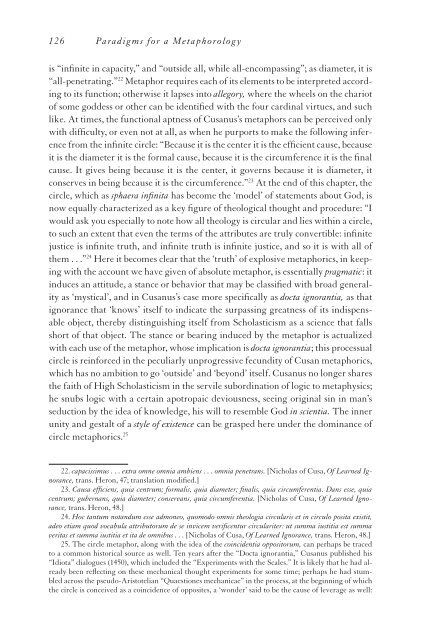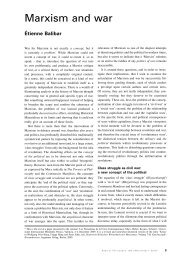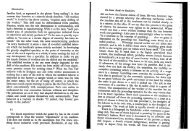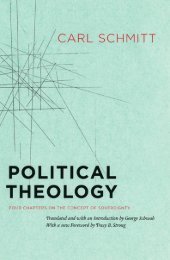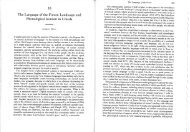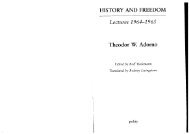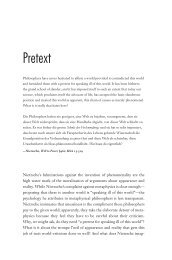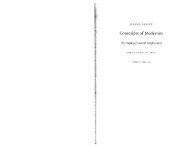Paradigms for a metaphorology.pdf - Townsend Humanities Lab
Paradigms for a metaphorology.pdf - Townsend Humanities Lab
Paradigms for a metaphorology.pdf - Townsend Humanities Lab
You also want an ePaper? Increase the reach of your titles
YUMPU automatically turns print PDFs into web optimized ePapers that Google loves.
126 <strong>Paradigms</strong> <strong>for</strong> a Metaphorology<br />
is “infinite in capacity,” and “outside all, while all-encompassing”; as diameter, it is<br />
“all-penetrating.” 22 Metaphor requires each of its elements to be interpreted according<br />
to its function; otherwise it lapses into allegory, where the wheels on the chariot<br />
of some goddess or other can be identified with the four cardinal virtues, and such<br />
like. At times, the functional aptness of Cusanus’s metaphors can be perceived only<br />
with difficulty, or even not at all, as when he purports to make the following inference<br />
from the infinite circle: “Because it is the center it is the efficient cause, because<br />
it is the diameter it is the <strong>for</strong>mal cause, because it is the circumference it is the final<br />
cause. It gives being because it is the center, it governs because it is diameter, it<br />
conserves in being because it is the circumference.” 23 At the end of this chapter, the<br />
circle, which as sphaera infinita has become the ‘model’ of statements about God, is<br />
now equally characterized as a key figure of theological thought and procedure: “I<br />
would ask you especially to note how all theology is circular and lies within a circle,<br />
to such an extent that even the terms of the attributes are truly convertible: infinite<br />
justice is infinite truth, and infinite truth is infinite justice, and so it is with all of<br />
them . . .” 24 Here it becomes clear that the ‘truth’ of explosive metaphorics, in keeping<br />
with the account we have given of absolute metaphor, is essentially pragmatic: it<br />
induces an attitude, a stance or behavior that may be classified with broad generality<br />
as ‘mystical’, and in Cusanus’s case more specifically as docta ignorantia, as that<br />
ignorance that ‘knows’ itself to indicate the surpassing greatness of its indispensable<br />
object, thereby distinguishing itself from Scholasticism as a science that falls<br />
short of that object. The stance or bearing induced by the metaphor is actualized<br />
with each use of the metaphor, whose implication is docta ignorantia; this processual<br />
circle is rein<strong>for</strong>ced in the peculiarly unprogressive fecundity of Cusan metaphorics,<br />
which has no ambition to go ‘outside’ and ‘beyond’ itself. Cusanus no longer shares<br />
the faith of High Scholasticism in the servile subordination of logic to metaphysics;<br />
he snubs logic with a certain apotropaic deviousness, seeing original sin in man’s<br />
seduction by the idea of knowledge, his will to resemble God in scientia. The inner<br />
unity and gestalt of a style of existence can be grasped here under the dominance of<br />
circle metaphorics. 25<br />
22. capacissimus . . . extra omne omnia ambiens . . . omnia penetrans. [Nicholas of Cusa, Of Learned Ignorance,<br />
trans. Heron, 47; translation modified.]<br />
23. Causa efficiens, quia centrum; <strong>for</strong>malis, quia diameter; finalis, quia circumferentia. Dans esse, quia<br />
centrum; gubernans, quia diameter; conservans, quia circumferentia. [Nicholas of Cusa, Of Learned Ignorance,<br />
trans. Heron, 48.]<br />
24. Hoc tantum notandum esse admoneo, quomodo omnis theologia circularis et in circulo posita existit,<br />
adeo etiam quod vocabula attributorum de se invicem verificentur circulariter: ut summa iustitia est summa<br />
veritas et summa iustitia et ita de omnibus . . . [Nicholas of Cusa, Of Learned Ignorance, trans. Heron, 48.]<br />
25. The circle metaphor, along with the idea of the coincidentia oppositorum, can perhaps be traced<br />
to a common historical source as well. Ten years after the “Docta ignorantia,” Cusanus published his<br />
“Idiota” dialogues (1450), which included the “Experiments with the Scales.” It is likely that he had already<br />
been reflecting on these mechanical thought experiments <strong>for</strong> some time; perhaps he had stumbled<br />
across the pseudo-Aristotelian “Quaestiones mechanicae” in the process, at the beginning of which<br />
the circle is conceived as a coincidence of opposites, a ‘wonder’ said to be the cause of leverage as well:


